Tennis Rules
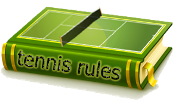
The modern game of tennis originated in Birmingham, England, in the late 19th century as "lawn tennis". Players have unlimited opportunities to challenge provided the challenges made are correct. Once three incorrect challenges are made in a set, they cannot challenge again until the next set. Tennis is enjoyed by millions of recreational players and is also a hugely popular worldwide spectator sport, especially the four Grand Slam tournaments.



Shape and dimensions:
the shape of the tennis court is a rectangle;
it is long 78 feet (23.7m);
For singles matches the width of the court is 27 feet (8.23 m);
for doubles matches it's 36 feet (10.97 m) in ;
It's divided across the middle by a net
The net high is 3 feet 6 inches (1.07m);
Types of court surfaces:
Acrylic - Textured, pigmented, resin-bound coating;
Artificial clay - Synthetic surface with the appearance of clay;
Artificial grass - Synthetic surface with the appearance of natural grass;
Asphalt - Bitumen-bound aggregate
Carpet - Textile or polymeric material supplied in rolls or sheets of finished product;
Clay - Unbound mineral aggregate;
Concrete - Cement-bound aggregate;
Grass - Natural grass grown from seed
Other - E.g. modular systems (tiles), wood, canvas;
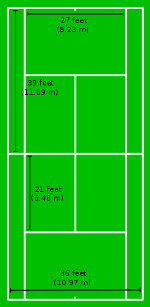




- The hitting surface of the tennis racket is flat and consist of a pattern of crossed strings connected to a frame;
- The frame of the racket must be not more 29 inches (73.66 cm) in overall length, including the handle;
- The frame, including the handle, shall be free of attached objects and devices that may limit or prevent wear and tear or vibration, or to distribute weight;
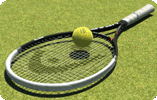



PLAYING GAME
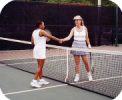




- throughout the delivery of the Service, the Server change his position by walking or running;
- throughout the delivery of the Service, the Server touch with either foot any area other than that behind the base-line;
- If the Server misses the ball in attempting to strike it;
- If the ball served touches a permanent fixture before it hits the ground;




- If the ball served touches the Receiver or anything which he wears or carries, before it hits the ground;
- If the Receiver loses the point;
- If the Server serves two consecutive faults;
- If the Server loses the point;
- if the ball hit court twice consecutively before return it directly over the net;
- if the ball hit anything outside any of the lines which bound his opponent’s Court;
- if the player volleys the ball before it has passed the net;



- For the first winning score is called 15 for that player. If he wins and the second - it's callwd 30 score. For third point, the score is called 40 and the game is scored by that player;
- If both players have won three points, the score is called deuce. To win a game, the plater have to winn two points one next another

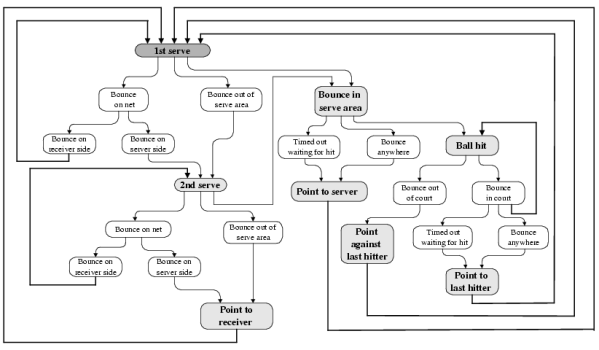
- A player (or players) who first wins six games wins a set.
- The tie-break system of scoring may be use as an alternative to the advantage set system:
- A player who first wins seven points shall win the game and the set, but only if he leads by a margin of two points. If not - the game will be extended until the margin has been achieved;
- The player whose turn it is to serve shall be the Server for the first point;
- After every six points, players will change ends and at the conclusion of the tie-break game;
- The tie-break game shall count as one game for the ball change;





